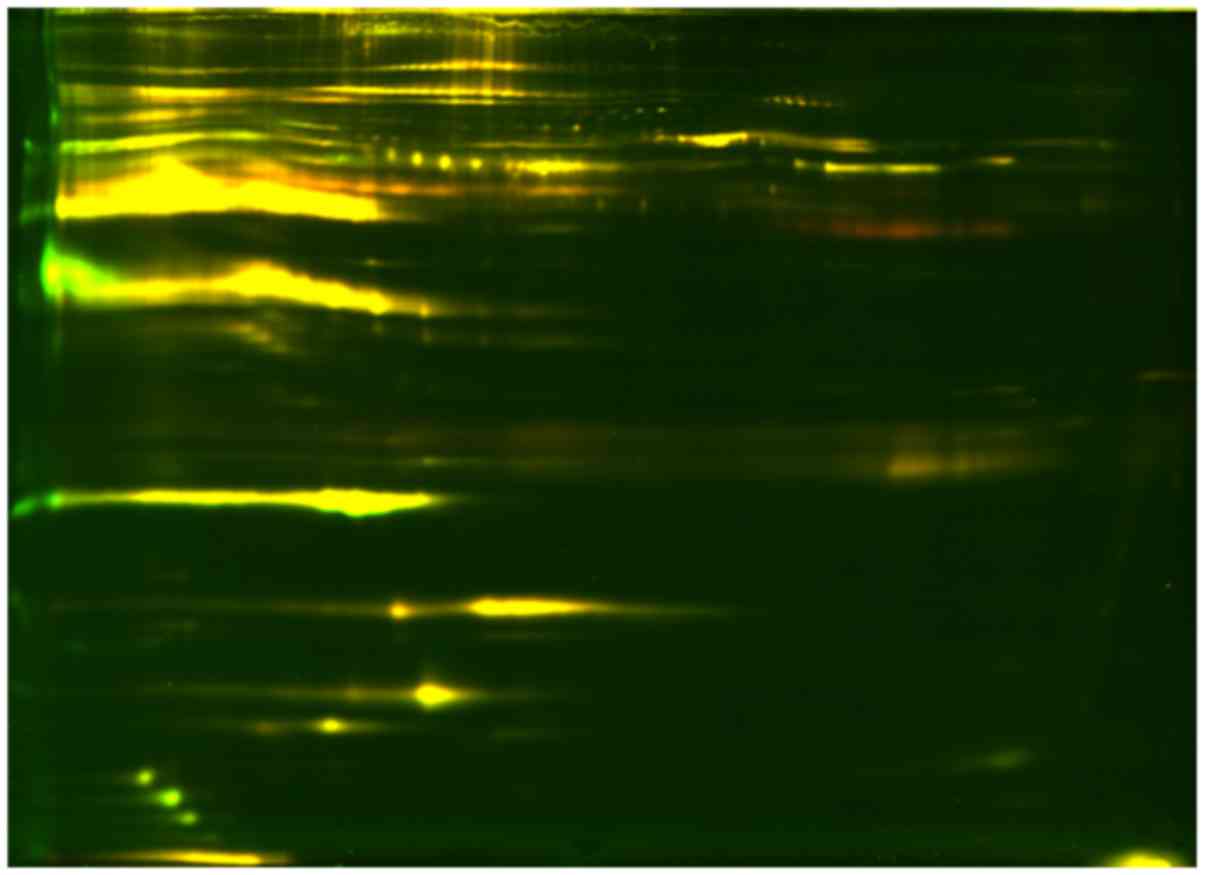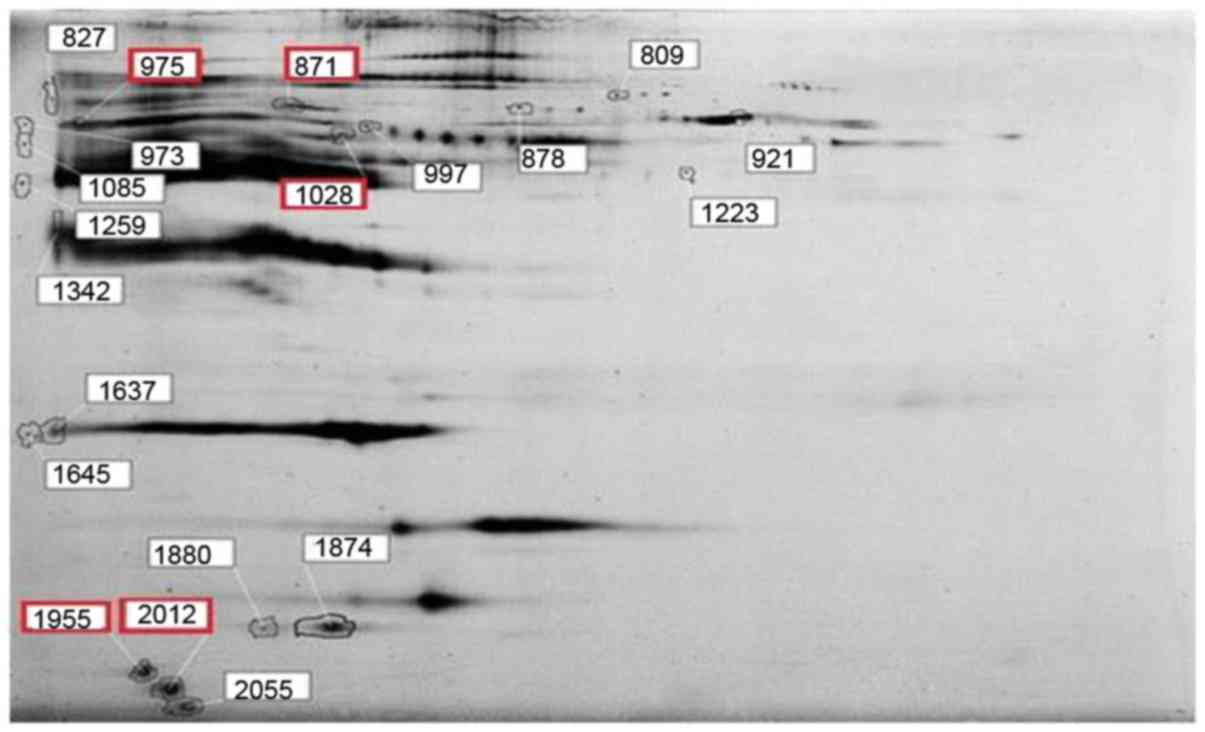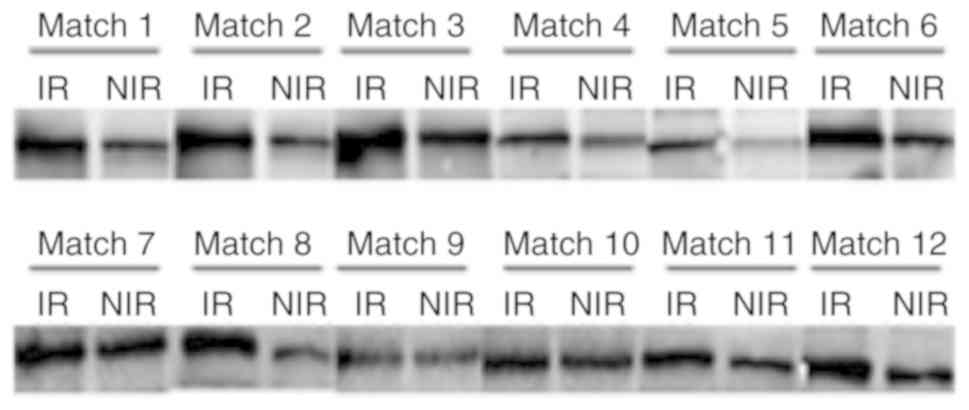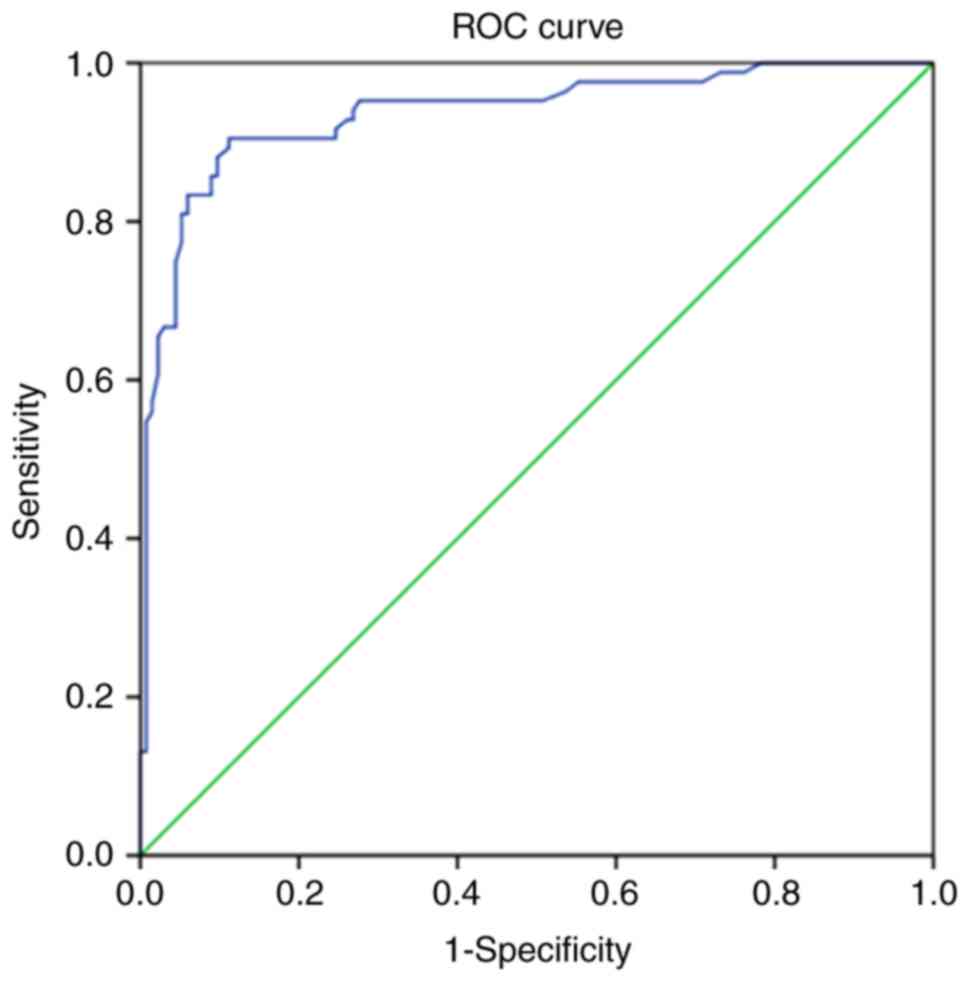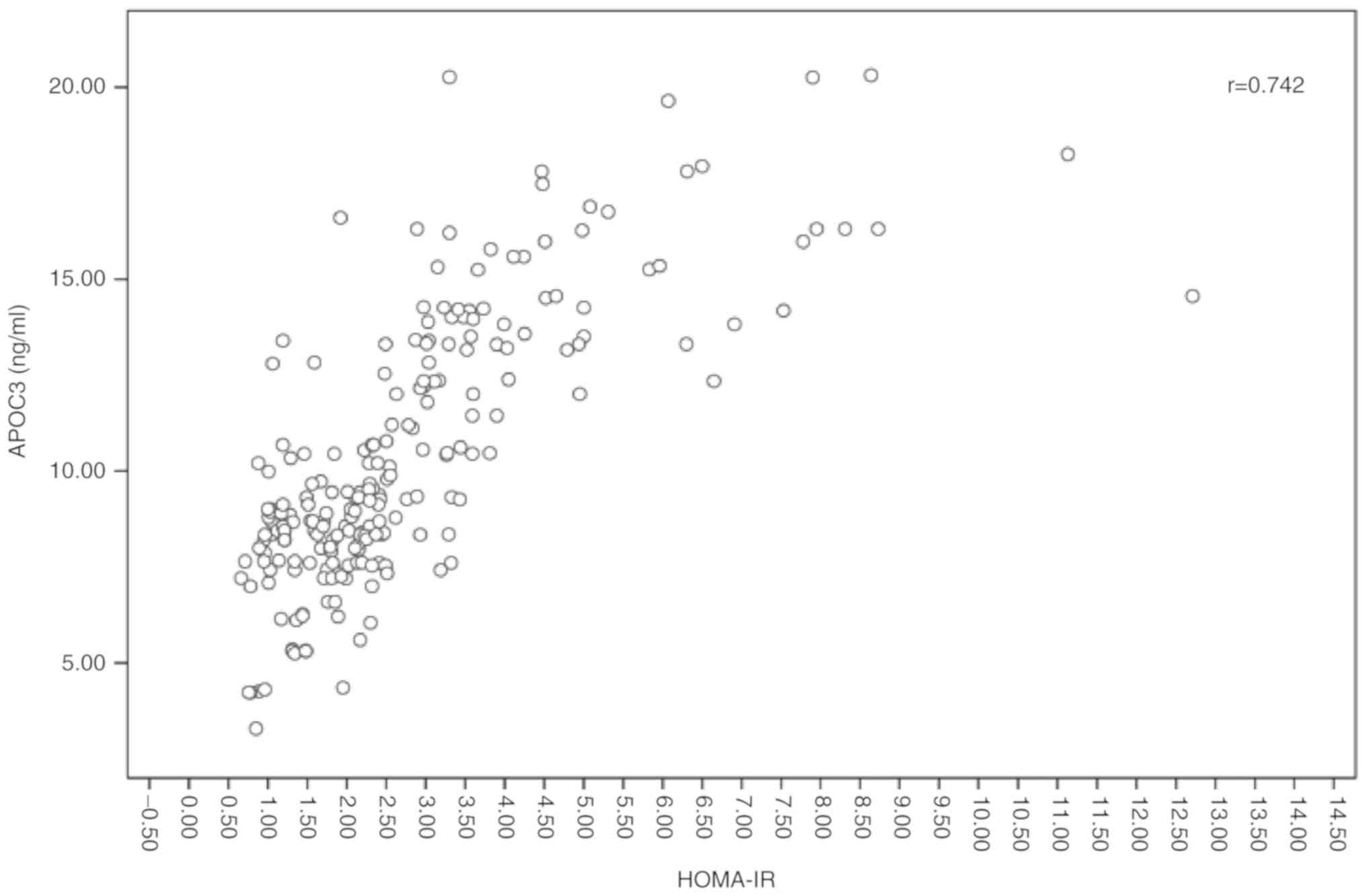|
1
|
Escobar-Morreale HF: Polycystic ovary
syndrome: Definition, aetiology, diagnosis and treatment. Nat Rev
Endocrinol. 14:270–284. 2018. View Article : Google Scholar : PubMed/NCBI
|
|
2
|
Wolf WM, Wattick RA, Kinkade ON and Olfert
MD: Geographical prevalence of polycystic ovary syndrome as
determined by region and race/ethnicity. Int J Env Res Pub He.
15:E25892018. View Article : Google Scholar
|
|
3
|
Sirmans SM and Pate KA: Epidemiology,
diagnosis, and management of polycystic ovary syndrome. Clin
Epidemiol. 6:1–13. 2013. View Article : Google Scholar :
|
|
4
|
Legro RS, Arslanian SA, Ehrmann DA, Hoeger
KM, Murad MH, Pasquali R and Welt CK; Endocrine Society. Diagnosis
and treatment of polycystic ovary syndrome: An Endocrine Society
clinical practice guideline. J Clin Endocrinol Metab. 98:4565–4592.
2013. View Article : Google Scholar : PubMed/NCBI
|
|
5
|
Azziz R, Marin C, Hoq L, Badamgarav E and
Song P: Health care-related economic burden of the polycystic ovary
syndrome during the reproductive life span. J Clin Endocrinol
Metab. 90:4650–4658. 2005. View Article : Google Scholar : PubMed/NCBI
|
|
6
|
Burghen GA, Givens JR and Kitabchi AE:
Correlation of hyperandrogenism with hyperinsulinism in polycystic
ovarian disease. J Clin Endocrinol Metab. 50:113–116. 1980.
View Article : Google Scholar : PubMed/NCBI
|
|
7
|
Dunaif A, Segal KR, Futterweit W and
Dobrjansky A: Profound peripheral insulin resistance, independent
of obesity, in polycystic ovary syndrome. Diabetes. 38:1165–1174.
1989. View Article : Google Scholar : PubMed/NCBI
|
|
8
|
Morales AJ, Laughlin GA, Butzow T,
Maheshwari H, Baumann G and Yen SS: Insulin, somatotropic, and
luteinizing hormone axes in lean and obese women with polycystic
ovary syndrome: Common and distinct features. J Clin Endocrinol
Metab. 81:2854–2864. 1996.PubMed/NCBI
|
|
9
|
Cassar S, Misso ML, Hopkins WG, Shaw CS,
Teede HJ and Stepto NK: Insulin resistance in polycystic ovary
syndrome: A systematic review and meta-analysis of
euglycaemic-hyperinsulinaemic clamp studies. Hum Reprod.
31:2619–2631. 2016. View Article : Google Scholar : PubMed/NCBI
|
|
10
|
Palomba S, Falbo A, Russo T, Rivoli L,
Orio M, Cosco AG, Vero R, Capula C, Tolino A, Zullo F, et al: The
risk of a persistent glucose metabolism impairment after
gestational diabetes mellitus is increased in patients with
polycystic ovary syndrome. Diabetes care. 35:861–867. 2012.
View Article : Google Scholar : PubMed/NCBI
|
|
11
|
Zhang J, Li JM, Deng QS, Chen WF, Peng XH
and Li L: Analysis of the metabolic characteristics of polycystic
ovary syndrome under different states. Chin J Pract Gynecol Obstet.
32:446–449. 2016.
|
|
12
|
Rizzo M, Tyndall EK, Frontoni S,
Jacoangeli F, Sarlo F, Panebianco F, Mistorni A, Di Renzo L,
Calafiore R, Luca G and De Lorenzo A: Rapid and easy assessment of
insulin resistance contributes to early detection of polycystic
ovary syndrome. J Endocrinol Invest. 36:527–530. 2013.PubMed/NCBI
|
|
13
|
Okamura Y, Saito F, Takaishi K, Motohara
T, Honda R, Ohba T and Katabuchi H: Polycystic ovary syndrome:
Early diagnosis and intervention are necessary for fertility
preservation in young women with endometrial cancer under 35 years
of age. Reprod Med Biol. 16:67–71. 2017. View Article : Google Scholar : PubMed/NCBI
|
|
14
|
Li X, Guo YR, Lin JF, Feng Y, Billig H and
Shao R: Combination of Diane-35 and metformin to treat early
endometrial carcinoma in PCOS women with insulin resistance. J
Cancer. 5:173–181. 2014. View
Article : Google Scholar : PubMed/NCBI
|
|
15
|
Tam CS, Xie W, Johnson WD, Cefalu WT,
Redman LM and Ravussin E: Defining insulin resistance from
hyperinsulinemic-euglycemic clamps. Diabetes Care. 35:1605–1610.
2012. View Article : Google Scholar : PubMed/NCBI
|
|
16
|
De Souza AL, Batista GA and Alegre SM:
Assessment of insulin sensitivity by the hyperinsulinemic
euglycemic clamp: Comparison with the spectral analysis of
photoplethysmography. J Diabetes Complications. 31:128–133. 2017.
View Article : Google Scholar
|
|
17
|
Kurl S, Zaccardi F, Onaemo VN, Jae SY,
Kauhanen J, Ronkainen K and Laukkanen JA: Association between
HOMA-IR, fasting insulin and fasting glucose with coronary heart
disease mortality in nondiabetic men: A 20-year observational
study. Acta Diabetol. 52:183–186. 2015. View Article : Google Scholar
|
|
18
|
Peplies J, Jiménez-Pavón D, Savva SC, Buck
C, Günther K, Fraterman A, Russo P, Iacoviello L, Veidebaum T,
Tornaritis M, et al: Percentiles of fasting serum insulin, glucose,
HbA1c and HOMA-IR in pre-pubertal normal weight European children
from the IDEFICS cohort. Int J Obesity (Lond). 38(Suppl 2):
S39–S47. 2014. View Article : Google Scholar
|
|
19
|
Mossmann M, Wainstein MV, Gonçalves SC,
Wainstein RV, Gravina GL, Sangalli M, Veadrigo F, Matte R, Reich R,
Costa FG and Bertoluci MC: HOMA-IR is associated with significant
angiographic coronary artery disease in non-diabetic, non-obese
individuals: A cross-sectional study. Diabetol Metab Syndr.
7:1002015. View Article : Google Scholar
|
|
20
|
Viswanathan S, Unlu M and Minden JS:
Two-dimensional difference gel electrophoresis. Nat Protoc.
1:1351–1358. 2006. View Article : Google Scholar
|
|
21
|
McNamara LE, Dalby MJ, Riehle MO and
Burchmore R: Fluorescence two-dimensional difference gel
electrophoresis for biomaterial applications. J R Soc Interface.
7(Suppl 1): S107–S118. 2010. View Article : Google Scholar :
|
|
22
|
Yin JH, Li M, Xu L, Wang Y, Cheng H, Zhao
XY and Mi J: Insulin resistance determined by Homeostasis Model
Assessment (HOMA) and associations with metabolic syndrome among
Chinese children and teenagers. Diabetol Metab Syndr. 5:712013.
View Article : Google Scholar : PubMed/NCBI
|
|
23
|
Li R, Yu G, Yang D, Li S, Lu S, Wu X, Wei
Z, Song X, Wang X, Fu S and Qiao J: Prevalence and predictors of
metabolic abnormalities in Chinese women with PCOS: A
cross-sectional study. BMC Endocr Disord. 14:762014. View Article : Google Scholar
|
|
24
|
Duivenvoorden I, Teusink B, Rensen PC,
Romijn JA, Havekes LM and Voshol PJ: Apolipoprotein C3 deficiency
results in diet-induced obesity and aggravated insulin resistance
in mice. Diabetes. 54:664–671. 2005. View Article : Google Scholar : PubMed/NCBI
|
|
25
|
Lee HY, Birkenfeld AL, Jornayvaz FR,
Jurczak MJ, Kanda S, Popov V, Frederick DW, Zhang D, Guigni B,
Bharadwaj KG, et al: Apolipoprotein CIII overexpressing mice are
predisposed to diet-induced hepatic steatosis and hepatic insulin
resistance. Hepatology. 54:1650–1660. 2011. View Article : Google Scholar : PubMed/NCBI
|
|
26
|
Avall K, Ali Y, Leibiger IB, Leibiger B,
Moede T, Paschen M, Dicker A, Daré E, Köhler M, Ilegems E, et al:
Apolipoprotein CIII links islet insulin resistance to β-cell
failure in diabetes. Proc Natl Acad Sci USA. 112:E2611–E2619. 2015.
View Article : Google Scholar
|
|
27
|
Ruiz-Narváez EA, Yang Y, Nakanishi Y,
Kirchdorfer J and Campos H: APOC3/A5 haplotypes, lipid levels, and
risk of myocardial infarction in the Central Valley of Costa Rica.
J Lipid Res. 46:2605–2613. 2005. View Article : Google Scholar : PubMed/NCBI
|
|
28
|
Kavo AE, Rallidis LS, Sakellaropoulos GC,
Lehr S, Hartwig S, Eckel J, Bozatzi PI, Anastasiou-Nana M, Tsikrika
P and Kypreos KE: Qualitative characteristics of HDL in young
patients of an acute myocardial infarction. Atherosclerosis.
220:257–264. 2012. View Article : Google Scholar
|
|
29
|
Blankenhorn DH, Alaupovic P, Wickham E,
Chin HP and Azen SP: Prediction of angiographic change in native
human coronary arteries and aortocoronary bypass grafts. Lipid and
nonlipid factors. Circulation. 81:470–476. 1990. View Article : Google Scholar : PubMed/NCBI
|
|
30
|
Sacks FM, Alaupovic P, Moye LA, Cole TG,
Sussex B, Stampfer MJ, Pfeffer MA and Braunwald E: VLDL,
apolipoproteins B, CIII, and E, and risk of recurrent coronary
events in the Cholesterol and Recurrent Events (CARE) trial.
Circulation. 102:1886–1892. 2000. View Article : Google Scholar : PubMed/NCBI
|
|
31
|
Larsson M, Vorrsjö E, Talmud P, Lookene A
and Olivecrona G: Apolipoproteins C-I and C-III inhibit lipoprotein
lipase activity by displacement of the enzyme from lipid droplets.
J Biol Chem. 288:33997–34008. 2013. View Article : Google Scholar : PubMed/NCBI
|
|
32
|
Maeda N, Li H, Lee D, Oliver P, Quarfordt
SH and Osada J: Targeted disruption of the apolipoprotein C-III
gene in mice results in hypotriglyceridemia and protection from
postprandial hypertriglyceridemia. J Biol Chem. 269:23610–23616.
1994.PubMed/NCBI
|















